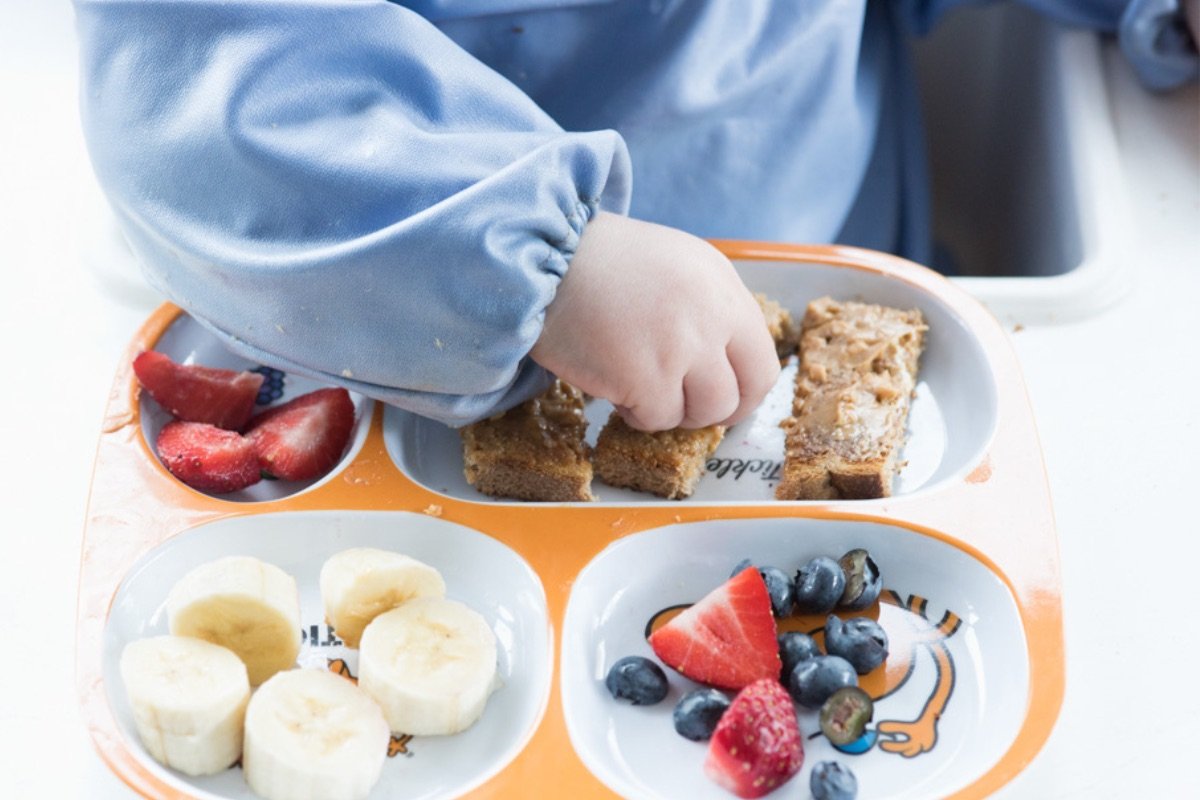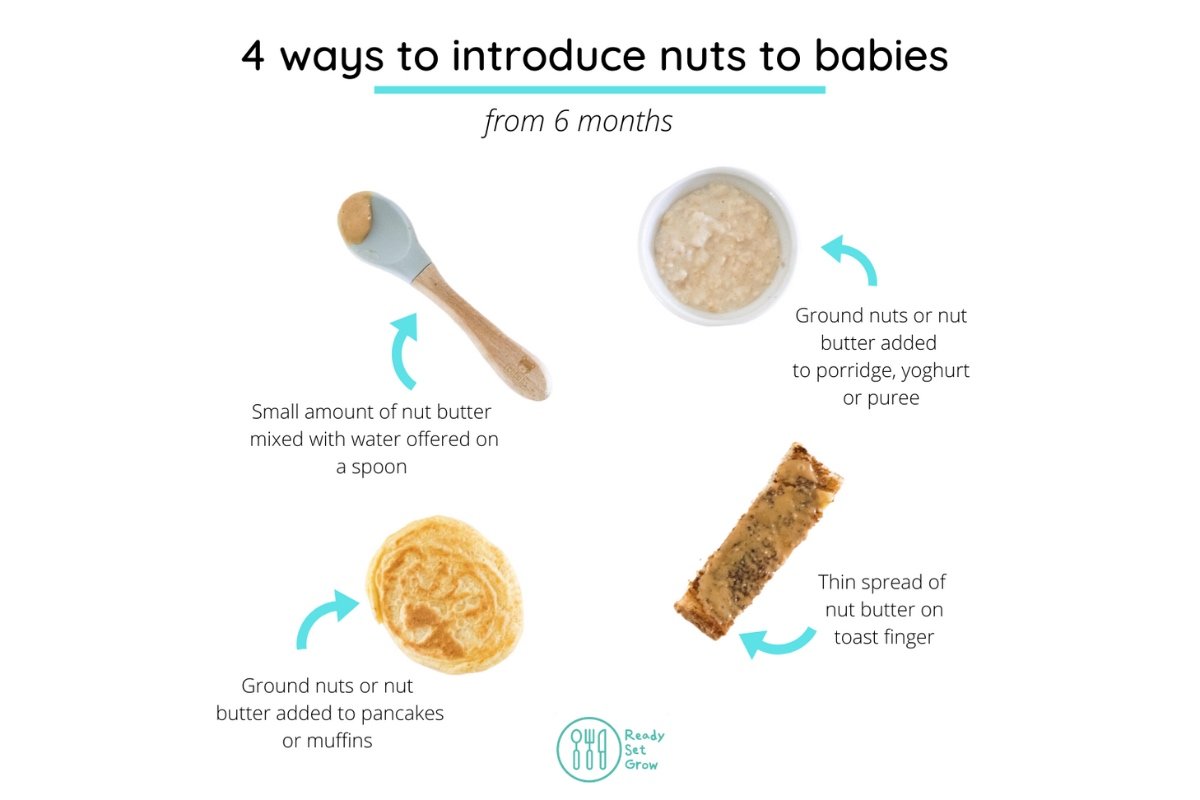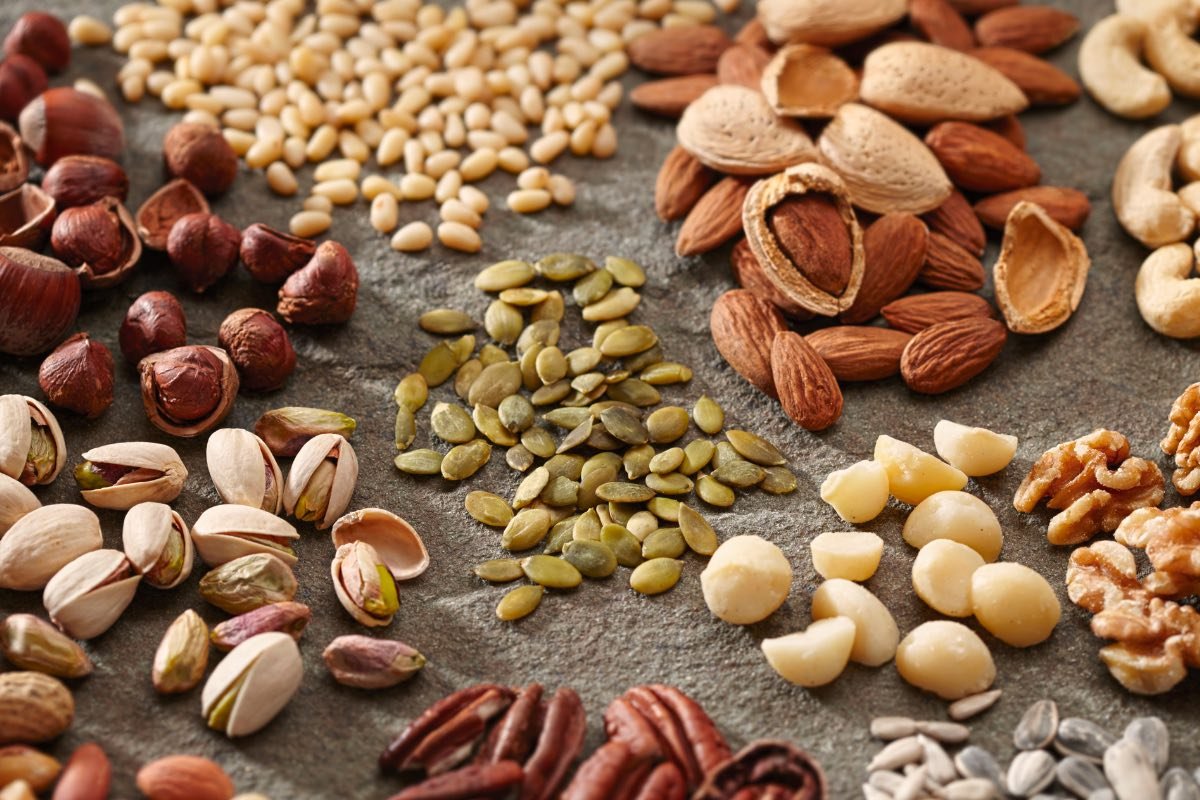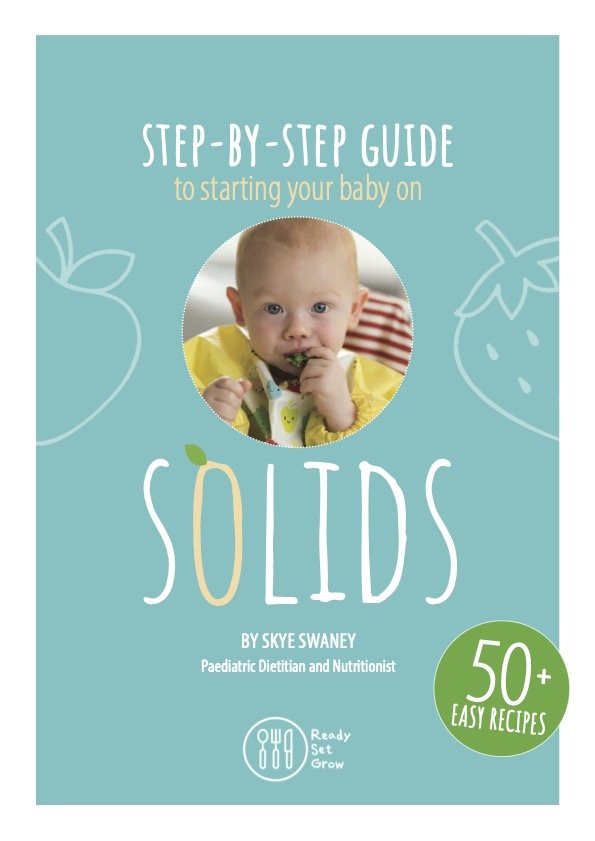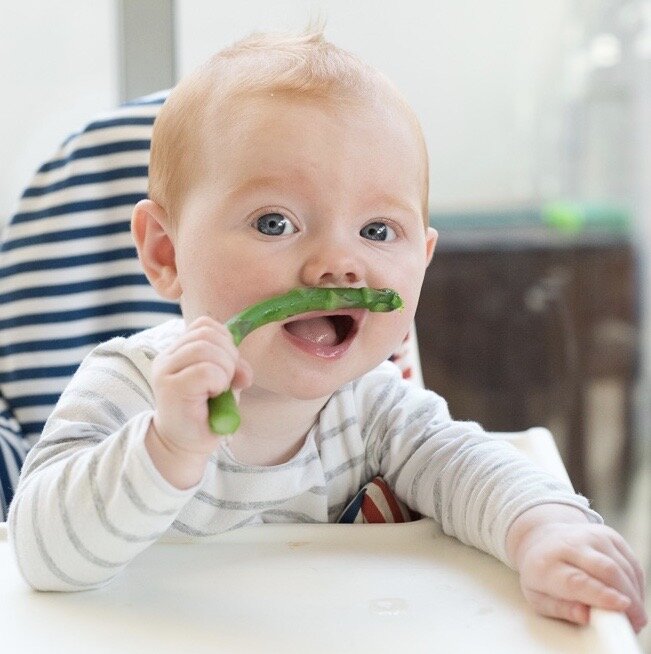How To Introduce Nuts To Baby Safely
There’s no doubt about it, the thought of your baby having an allergic reaction is really scary. So, it’s no wonder that it’s one of the biggest worries parents have when they start their baby on solids.
Nut allergies are one of the most common food allergies in children. But introducing nuts early in your baby’s life (between 6 and 12 months) can actually reduce their risk of developing an allergy.
So how can you introduce nuts to your baby safely?
What causes a nut allergy?
Food allergies develop when our immune system mistakenly identifies a protein in a particular food as harmful.
The immune system then releases substances such as histamines to fight off the perceived threat. This causes inflammation, which results in an allergic reaction.
Peanuts vs tree nuts
Despite both being classified as ‘nuts’, peanuts and tree nuts (almonds, walnuts, cashew nuts, pistachios, pecans, hazelnuts, brazil nuts, macadamia nuts and pine nuts) aren’t actually related.
In fact, peanuts aren’t a nut at all, they’re a legume, like lentils, chickpeas and beans - although most people with a peanut allergy can safely eat other legumes.
And ‘tree nuts’ aren’t straightforward either, as they come from a variety of botanical families and each contain slightly different proteins.
This means that most people are allergic to either peanuts OR tree nuts, however, 20-30% of people with a peanut allergy also have an allergy to one or more tree nuts.
How to reduce the risk of a nut allergy
Up until fairly recently, parents were told to delay the introduction of allergenic foods until after 12 months to reduce the risk of allergies developing.
But, thanks to recent studies, we now know that delaying the introduction of allergenic foods doesn’t protect against allergies, and can actually increase the risk.
One particular study, called the LEAP study, was conducted in England from 2006-2014 and included babies at high risk of developing peanut allergy (babies with severe eczema, an allergy to egg, or both). It found that babies who were fed peanut under 1 year of age and included it regularly in their diet had an 86% reduction in peanut allergy compared to children who avoided peanut.
The percentage of children with peanut allergy in the group who avoided peanuts was found to be 17%, compared to 3% in the group who included peanuts regularly.
The idea for the LEAP study came from the observation that there is a low rate of peanut allergies in children in Israel, where peanuts are often included as part of a snack from as early as 4 months of age.
So when should nuts be introduced?
Thanks to this study and other research in this field, early introduction of peanuts and tree nuts is now encouraged.
The advice now is to introduce allergenic foods at around 6 months, when babies are developmentally ready for solid foods (not before 4 months), and that these foods should be introduced by baby's first birthday.
This includes babies at high risk of allergy, unless an allergy to that particular food has already been confirmed.
Once allergens are introduced, continuing to give these foods regularly - around twice per week - helps to maintain tolerance.
How should nuts be introduced?
As with all food allergens, the best time to introduce nuts is at breakfast or lunchtime so you can monitor for any reactions throughout the day.
Here are some safe ways to introduce peanuts and tree nuts. Start with a very small amount, around 1/4 teaspoon and gradually increase the quantity if your baby tolerates them.
Add some warm water to a teaspoon of peanut butter or tree nut butter (e.g. almond butter or cashew butter) to make a warm puree, then offer your baby a small amount on a spoon (globs of nut butter can be a choking hazard)
Add ground or finely grated nuts or nut butter to porridge, yoghurt or fruit or vegetable puree
Add ground or finely grated nuts or nut butter to pancakes or muffins (for baby-led weaning and babies who are managing finger foods)
Spread smooth peanut butter or nut butter thinly on a finger of toast (another option for baby-led weaning)
NB: Never rub food on your baby’s skin as a way of testing for a food allergy. This will not help to identify a food allergy and can actually increase the risk of an allergy developing.
Introduce each type of nut separately
As each nut is slightly different and contains different proteins, children and adults can be allergic to one type of nut but able to tolerate another.
Because of this, each type of nut needs to be introduced separately, ideally leaving 2-3 days between each one so that any reactions can be accurately identified.
The list of nuts to introduce includes:
Peanuts
Almonds
Walnuts
Cashew nuts
Pistachios
Pecans
Hazelnuts
Brazil nuts
Macadamia nuts
Pine nuts
Once you’ve introduced each type of nut separately, using mixed nut butter is an easy way to continue exposing your baby to a range of different nuts in one go.
What if your baby is at high risk of a nut allergy?
If your baby has severe eczema or an existing food allergy, they are considered at high risk of other food allergies. If this is the case, speak to your baby's doctor about how to introduce food allergens.
Earlier introduction of allergens is sometimes recommended for high-risk babies as this has been shown to be protective against allergies.
How to tell if your baby is allergic to nuts
An allergic reaction will involve one or more of the following symptoms.
Some allergic reactions happen quickly and are easy to pick up, for example:
Swelling of the face
Hives
Runny nose
Vomiting
Others may be delayed and less obvious such as:
Eczema
Reflux
Poor growth
Diarrhoea or constipation
Usually, only a mild reaction occurs in children who are allergic to peanuts or other nuts. However, peanuts and tree nuts (especially cashews) are a common cause of anaphylaxis.
Anaphylaxis is the most severe form of allergic reaction which affects a person’s breathing and/or circulation and is life-threatening. The following symptoms indicate your child is having an anaphylactic reaction:
Difficulty with breathing and/or noisy breathing
Wheeze or persistent cough
Swelling of the tongue
Swelling and/or tightness in the throat
Difficulty talking or hoarse voice
Loss of consciousness or collapse
Becoming pale and floppy (infants/young children)
Visit preventallergies.org.au for more information on how to recognise an allergic reaction.
What to do if your baby has a reaction
The first time your baby has a mild or moderate reaction to nuts, take them to their GP.
The doctor will confirm whether your child had an allergic reaction and advise you on what to do next time a reaction occurs. They may refer you to an allergy specialist if necessary.
In the case of a more severe reaction, the ASCIA guidelines state that ‘if you notice any swelling of the lips, eyes or face, hives or welts, vomiting or any change in your baby’s well-being (becoming very unsettled), soon after giving a new food, your baby could be having an allergic reaction. You should stop feeding your baby that food and seek medical advice.
Call an ambulance immediately if there are signs of a severe allergic reaction (anaphylaxis), such as difficult/noisy breathing, your baby becomes pale and floppy, or there is tongue swelling.’
Visit preventallergies.org.au for more information on what to do if you think your baby is having an allergic reaction.
Avoiding nuts in children with nut allergies
The best treatment for a nut allergy, as with any food allergy, is to avoid them altogether.
Sometimes, even very small amounts of peanuts and tree nuts can cause symptoms, so thorough food safety measures are needed to avoid cross-contamination and food labels need to be read carefully.
If you’re unsure about how to avoid nuts and safely stick to a nut-free diet, a paediatric dietitian can help.
If your child is in childcare, you will need to work with them to develop a management plan specific to your child. This should also be communicated to any family members and friends who care for your child.
Reliable diagnosis of food allergies
It’s essential that allergies are correctly diagnosed and confirmed by a doctor.
Your child’s doctor may order a skin prick test or blood tests for allergen-specific IgE to help to confirm or exclude potential allergens.
However, while these tests can help to determine whether a person is allergic or not, they don’t tell us how severe the reaction will be in people with an allergy.
Other forms of allergy testing are not evidence-based and therefore not recommended.
Avoid excluding nuts unnecessarily
Nuts are a very nutritious food with many health benefits and a range of nutrients including protein, carbohydrates, healthy monounsaturated fats, iron, B vitamins and vitamin E.
These nutrients are particularly important during infancy and early childhood when requirements are high to support growth and development.
For this reason, and to minimise the risk of an allergy developing, it’s not a good idea to exclude them from your baby’s diet just in case they have an allergy.
Nuts and choking
Nuts can be a choking hazard for babies and young children, so it’s important that they are served to babies in a safe way.
Whole nuts - both whole peanuts and whole tree nuts, chunks of nuts and globs of nut butter should be avoided, instead, go for ground or grated nuts or thinly spread smooth nut butter.
For more information about introducing allergens to your baby, check out my Step-by-Step Starting Solids Guide
For more information on food allergies, visit www.allergy.org.au or www.preventallergies.org.au/
References:
ASCIA Guidelines: Infant Feeding and Allergy Prevention
The Royal Children’s Hospital ‘Kids Health Info: Peanut and Tree Nut Allergy’
The Royal Children’s Hospital ‘Home Introduction of an Allergenic Food’

